- | 6:00 am
Lady Gaga’s Oscar-nominated wigs steal ‘House of Gucci.’ Here’s the story behind their evolution

House of Gucci was an early Oscar favorite, and no wonder. Directed by Ridley Scott, it has every element the Academy loves. The biopic charts the rise of Patrizia Reggiani (played by Lady Gaga) as she marries into the Gucci family. Condensing 25 years of unbelievable life into two hours, she morphs from a doe-eyed socialite to vengeful queen of fashion, as she eventually contracts hit men to murder her husband, Maurizio Gucci (Adam Driver).
“The only test [Gaga] told me to consider was, ‘When I see myself on the screen, I don’t want to see any Lady Gaga,’” Aspiras says. “Because when we’ve done everything in the book, how was I going to erase every iconography of her?”

Lady Gaga and hair designer Frederic Aspiras [Photo: Fabio Lovino/MGM]
Initially, Aspiras faced resistance from the production team, because editing a film is harder when a character has a strict and specific evolution than if they look the same in every scene. The debate culminated in Rome, where the filmmakers were doing screen testing with Gaga.
“Ultimately, the director and producers were like ‘Listen, we just want to do two wigs and make it easier.’ And I said, ‘The life of the woman needs to evolve. It has to be part of the movie.’ [Scott] said, ‘Okay, let’s see what you have,’” recalls Aspiras, who laid out all the wigs like a chronological timeline for Scott to inspect. “When Ridley Scott saw it, he was like, ‘Whoa.’” Ten wigs would ultimately make it on-screen in the final, edited film.
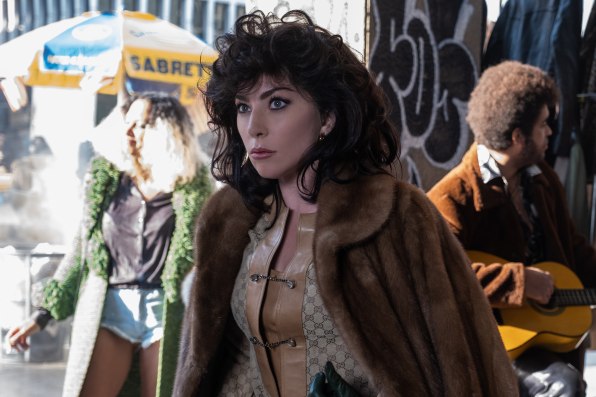
[Photo: Fabio Lovino/MGM]
THE EVOLUTION OF GAGA’S HAIR
It may be surprising that in House of Gucci—a film all about fashion—the star actor was given a pointedly dated haircut. Gaga first appears on-screen with a bob. The year is 1970, but the cut dominated the 1960s.
“At the beginning of the movie, we see her very young and innocent; the hair was set to be something a little more fresh and untouched by the world,” Aspiras says.
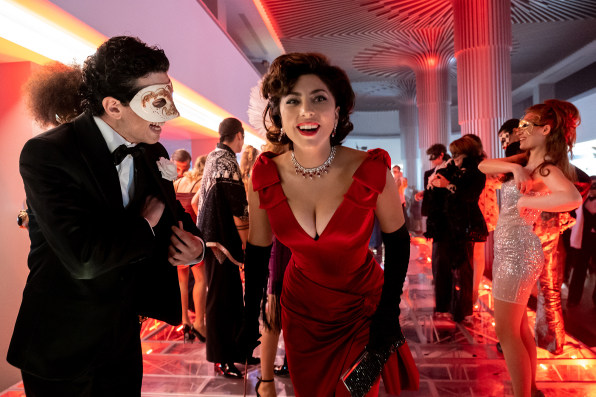
[Photo: Fabio Lovino/MGM]
Aspiras didn’t have many photos of Reggiani from that time to reference. (After all, she wasn’t famous yet.) So instead, he investigated what women living in Italy were wearing at the time. He learned that they styled themselves with the fashion sensibility of a ’60s-era Fellini film.
“So Patrizia’s hairstyles would not look like feathered hair from the ’70s like we saw in America,” Aspiras says. “Especially for a woman of her age, 25, idolizing [Italian] actresses and coming from the middle class.”
Reggiani and Gucci meet, fall in love, and have a baby. Driven largely by Reggiani’s own passions, Gucci is handed the keys to the family business. As we work our way into the 1980s, the duo abandons the seemingly quaint streets of Italy for Manhattan. And Reggiani’s hair follows her on this journey.
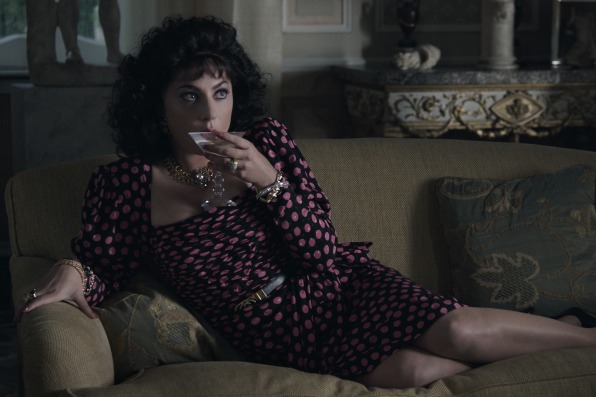
[Photo: MGM]
“They cut a scene out where she has a makeover!” Aspiras exclaims with a laugh. In a transitional moment that the audience never saw on-screen, Reggiani’s hair looks like that of Raquel Welch or Sophia Loren in the ’80s. It was blown out and auburn brown. But sitting in her penthouse—decorated with a Lichtenstein and other pop art—her hair is dyed black, and she gets a full-out perm.
“Black hair represents, to me, this type of power. Big ’80s hair represented power, strength . . . my mom would blow it out really big and feathered in the side,” Aspiras says. “That transformation is because now she’s part of the family, she wanted to become part of the legacy, and she had to fight with all these men to be part of it.”
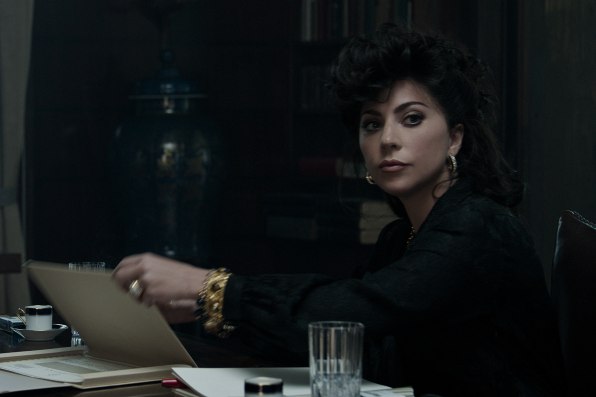
[Photo: MGM]
By the mid-’80s, Reggiani’s influence with both Gucci the man and the business begins to wane. As Reggiani enters her 40s, her hair begins to thin with age. [Gaga] was sometimes like, ‘Oh this is ugly,’ and I’d say, ‘Remember, it’s not you, it’s Patrizia,” Aspiras says. “She’d say, ‘This is like my grandmother’s hair!’ And I said, ‘That’s the look!’”
Yet even as her hair thinned, Reggiani’s on-screen hair only grew more aggressive—bigger and frizzier—mirroring her inner turmoil. You can almost see the neurons misfiring in her brain as the strands of hair float in the air.
“When she was desperate to get her [influence] back, her hair was more disheveled and desperate looking,” Aspiras says, noting that he also started to cut her hair shorter. “When she was going to put a hit on Maurizio, I made her look like a mobster, with grimy, greasy hair.”
In one scene late in the film, I could swear that individual strands of her hair stick out like a porcupine—a comparison Aspiras does nothing to refute. Gaga has said she actually played her character like a fox or panther. And as odd as that might sound, it’s not so far from the hyperbolic countenance of Patrizia Reggiani.
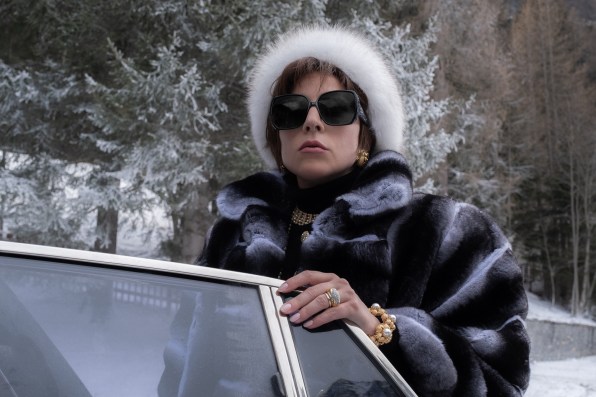
[Photo: Fabio Lovino/MGM]
“The real Patrizia style was over the top. She wasn’t a classic beauty; she overprocessed and colored her hair. I wanted to take that and run with it,” Aspiras says. “After Maurizio gets killed, she claims her house back from his mistress. She comes in with her big leather fur coat, power blowout black hair, and pushes her out of the way. . . . If she had a bun it would have been completely different. That hairstyle sets a type of iconography of the ’80s, and a tone that I’m the boss.”
But of course, by this point in the film, it’s actually the ’90s. By then, Reggiani should have been wearing the Rachel.




































